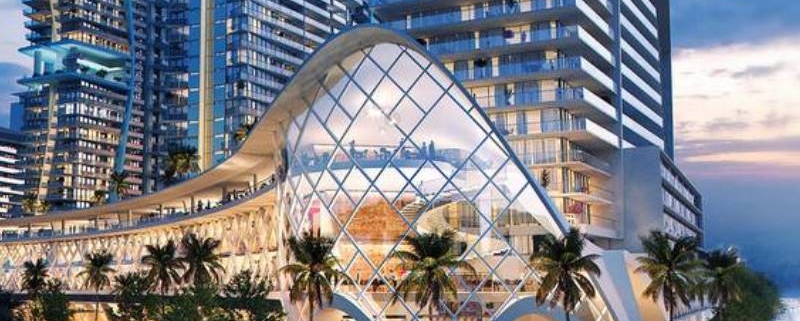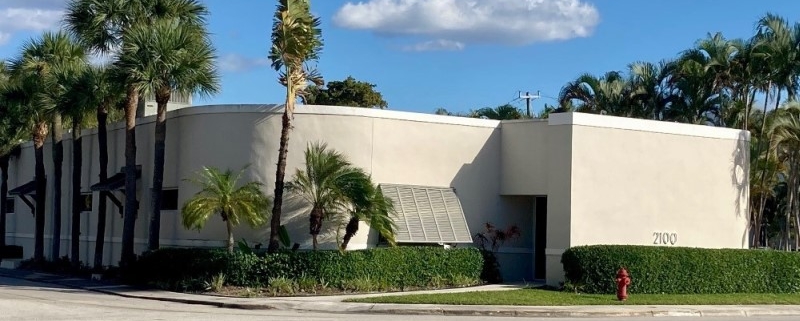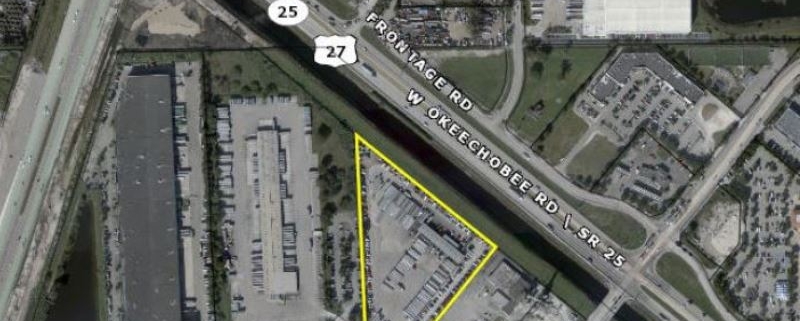The Greater Fort Lauderdale Alliance helped companies retain or create 757 jobs in Broward County in a span of six months, leaders of the nonprofit economic development organization said at its mid-year luncheon on Friday.
More than 600 people attended the gathering at the Seminole Hard Rock Hotel & Casino in Hollywood. The event was presented by Florida Power & Light and the Broward Metropolitan Planning Organization.
“Companies continue to choose Greater Fort Lauderdale’s highly competitive business climate and unbeatable quality of life,” said Bob Swindell, president and CEO of the Greater Fort Lauderdale Alliance.
Below are economic development highlights from the Alliance between Oct. 1, 2021 and April 30:
West Marine, a national chain of boating supplies and retail stores, will create 225 jobs at its new national headquarters at 1 E. Broward Blvd. in Fort Lauderdale. West Marine’s previous headquarters was in Santa Cruz, California. The company is also making an $800,000 capital investment to build out its 50,000-square-foot office space.
Icon International, a Greenwich, Connecticut-based corporate barter service, will add another 100 jobs as it increases its office footprint at 301 E. Las Olas Blvd. in Fort Lauderdale to 23,598 square feet this summer.
Project Play, the code name for an anonymous company that makes plush toys, action figures, collectibles, and musical instruments, has retained 75 jobs, created 150 jobs, and will make a $10 million capital investment in Plantation. Back in October 2021, Project Play was seeking up to $112,500 in incentives from Broward County in exchange for making more than $8 million in capital investments and creating 150 jobs by 2029 that pay an average salary of $80,874 a year. It’s leasing a facility that’s 100,000 square feet in size — the location of which can’t be revealed as yet.
Funtrition, a manufacturer of gummy vitamins affiliated with the Procaps Group (Nasdaq: PROC), that will be moving into a a 60,000-square-foot warehouse at 11600 Miramar Parkway in June. Funtrition will create 100 jobs, retain 42 jobs, and make a $9 million capital investment in Miramar.
CIG Financial, a Los Angeles-based company that specializes in providing loans for automobile, will be create 30 jobs in a 7,800-square-foot office at 1475 W. Cypress Creek Road in Fort Lauderdale.
Pherros Biosciences, a biotech company based in Deerfield Beach that produces novel drugs and treatments, will create 20 jobs at its 25,000-square-foot space at 740 S. Powerline Road.
Norse Atlantic Airways, a low-cost airline based in Arendal, Norway, will open its U.S. headquarters at Fort Lauderdale Executive Airport at 5520 N.W. 21st Terrace. Norse Atlantic Airways will create 15 jobs as it launches flights from Fort Lauderdale to Paris, London and Oslo later this year.
Swindell also touted other significant moves into Broward that either occurred outside of the six month period, or by companies that weren’t assisted by the Alliance. They include:
Stryker (NYSE: SYK), a multinational medical technologies company, which opened a facility at 3365 Enterprise Ave. in Weston in 2019 with the Alliance’s assistance. Stryker is in the process of adding 550 jobs, retained 351 jobs, and made a capital investment of $25 million.
TD Bank (NYSE: TD) and the Alan B. Levan NSU Broward Center of Innovation, will soon launch an innovation program that will create 200 new jobs in the Fort Lauderdale area.
JP Morgan Chase (NYSE: JPM), which leased 15,000 square feet inside The Main Las Olas, a newly constructed Class A building at 201 E. Las Olas Blvd. in Fort Lauderdale. JP Morgan Chase will hire 15 to 40 people, Swindell said.
Starr Insurance Co. leased 11,000 square feet at the Main Las Olas.
UK-based Vantage UAE opened a drone factory at 13798 N.W. 4th St. in Sunrise.
Former Gov. Jeb Bush also spoke at the event. He advocated a return to “decent politics” encouraged entrepreneurs to take more risks.
Other sponsors of the event include Delta Airlines, Fort Lauderdale Executive Airport, Memorial Healthcare System, Seminole Heritage Services, the City of Hollywood, JetBlue Airways, JM Family Enterprises, South Florida Business & Wealth, AutoNation, Becker, Broward Health, Capital Analytics Associates, Duke Realty, Fort Lauderdale/Hollywood International Airport, Hotwire Communications, Starmark, Verizon, and the South Florida Business Journal.
A partnership between private companies and Broward local governments, the Greater Fort Lauderdale Alliance advocates for companies to move to Broward County, The organization also advocates for incentives on behalf of private enterprises that hire and make a significant capital contribution. Additionally, the Alliance helps with permitting and connecting outside companies with local businesses and officials.
Source: SFBJ









 “This marks our second recent investment in a well located, fully secured trailer parking lot in South Florida,” said Bradlee Lord, Vice President of Seagis, who is based out of the company’s South Florida office. “These unique industrial real estate assets remain in high demand across the nation, but especially in a land constrained market like ours. Beyond its prime location in one of Miami’s most desirable industrial submarkets, this property was attractive, as it’s a low coverage site and offers long-term optionality.”
“This marks our second recent investment in a well located, fully secured trailer parking lot in South Florida,” said Bradlee Lord, Vice President of Seagis, who is based out of the company’s South Florida office. “These unique industrial real estate assets remain in high demand across the nation, but especially in a land constrained market like ours. Beyond its prime location in one of Miami’s most desirable industrial submarkets, this property was attractive, as it’s a low coverage site and offers long-term optionality.”
